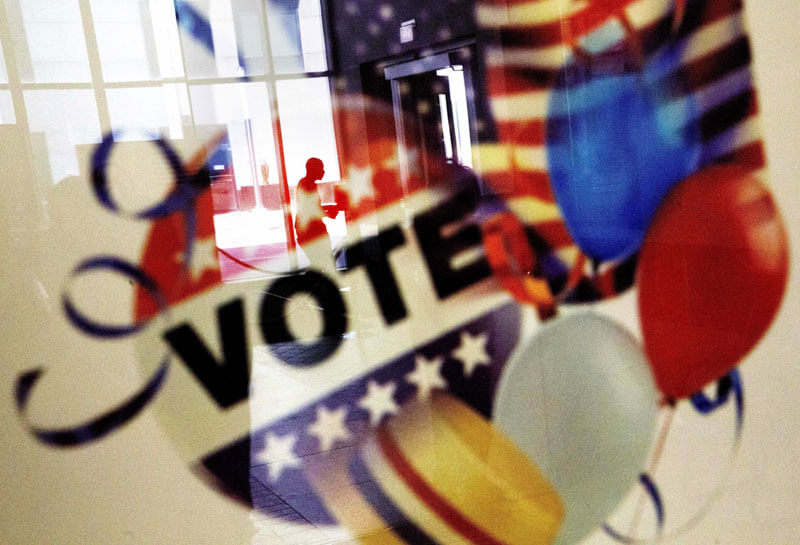
When partisanship is high, candidate quality and campaigns matter little, say Mark Kayser and Arndt Leininger.
After a grueling presidential campaign with a shocking outcome that deviated from the predictions of polls-based models, many people are understandably asking what went wrong? Hillary Clinton ran a disciplined campaign, she out-spent Donald Trump in campaign advertising, she won the debates and her party hosted the better get-out-the-vote organisation. Trump, by all conventional understanding of campaigns, was a nightmare candidate. He insulted Latinos, proposed banning all members of a major world religion from entering the United States, was recorded making obscene and predatory statements about women and got into an argument with the family of a fallen US soldier, among other gaffes. He demonstrated little knowledge of issues, little interest remedying this and resistance to advice from campaign advisors.
Many campaign-centred narratives are emerging to explain Clinton’s surprising loss. Some argue that, misled by state-level polling, she did not focus her campaign sufficiently on the Rust Belt states – Wisconsin, Michigan and Pennsylvania – that cost her the election. She herself has suggested that the FBI’s release of two letters shortly before the election, first reviving the investigation into her email affair and then exonerating her, cost her the election. We believe that the real lesson from this election is that campaigns do not seem to matter much at all.
Political scientists observed this election like everyone else but not just out of interest in who would win. The 2016 US presidential election seemed like perfect test of whether and how much campaigns matter. Scholars have had difficulty in the past finding evidence of large campaign effects. One reason, many argued, was that both parties consistently ran highly professional campaigns which canceled out each other. The 2016 campaign offered an asymmetric race between an underfunded, poorly organised and gaffe-prone candidate on one side and a well-funded, highly organised and disciplined campaign on the other. If Clinton defeated Trump, as nearly all analysts expected, it would finally be possible to demonstrate how much campaigns affect results. This did not happen.
Despite an abysmal campaign, Trump won. There may be some validity to the campaign-centred explanations, but we should note that the 2016 presidential election, like many previous elections, produced results curiously in line with what basic fundamentals such as presidential approval, partisan identification and economic performance would predict months before the election. In other words, despite all the gyrations of the campaign, when it finally came down to casting their ballots, voters behaved by and large as economic conditions and partisanship predicted they would. The figures below show that the 2016 election results deviate only slightly from what one would expect, given levels of economic growth and presidential approval. Although Obama was one of the more popular presidents, throughout his incumbency his approval was only slightly above 50%. Therefore, one would not have expected Clinton to simply ride a wave of Obama support to the White House. Similarly, growth in the quarter preceding the election (second quarter of election) was sluggish compared to most of the previous presidential elections.
A very close election or even a Trump win is what indeed a number of fundamentals-based forecasting models predicted months before the election. Granted, some of these were wrong in being right by getting the popular vote share wrong. Nevertheless, they did all foresee that the election was far from a near-certain win for Clinton, which poll-based forecasts predicted closer to the election.
So what are we to make off all these shifts in the polling and polling averages throughout the campaign? Some of those changes in vote intention, following one of the numerous events in this campaign, might have captured actual shifts in opinion but a certain proportion probably also arose from partisans being less likely to speak to pollsters after their candidate committed a gaffe, lost a debate or ignited a scandal. We do not know how much of the changes to attribute to each mechanism but we do know that the effects of campaign “events” are short-lived, often lasting only a week or two. Thus, an “event” in the last two weeks of a campaign – think of the FBI letters – might influence the election to the degree that polling shifts capture actual changes in vote preference.
Reasons exist, however, to doubt that the shifts in the polls were primarily driven by actual changes in opinion, especially in today’s highly partisan atmosphere. When partisanship was weaker in the past, the electorate contained more swing voters. When George McGovern was judged to be too ideologically extreme, movements like “Democrats for Nixon” siphoned off a lot of his support to the other party. Goldwater suffered a similar fate in the opposite partisan direction when Republican moderates abandoned him. When Trump built a strong case in the election that he was unfit for the presidency, some Republican intellectuals and party members not facing election also abandoned him, but 90% of Republicans who voted remained loyal to their party.
In an age of high partisanship, candidate quality and campaigns seem to matter even less. If voters are emotionally committed to a particular party at the beginning of a campaign, “motivated reasoning” will filter out or reinterpret negative performance by, or revelations about, their preferred candidate. Trump could have done nearly anything and Republicans plus those independents and Democrats attracted by his white grievance politics would not abandon him. This campaign, it seems, did not matter. Fundamentals that reflect – such as presidential approval, or predict – such as economic performance – partisanship preferences shaped this election months ago. The large proportion of voters feeling a strong partisan commitment to Trump or the Republican Party justified or ignored his statements. Clinton had little chance of peeling away Republican women or military families offended by Trump’s campaign antics. When partisanship is high, campaigns matter even less.
More about the authors
-
Mark Kayser, Professor of Applied Methods and Comparative Politics
